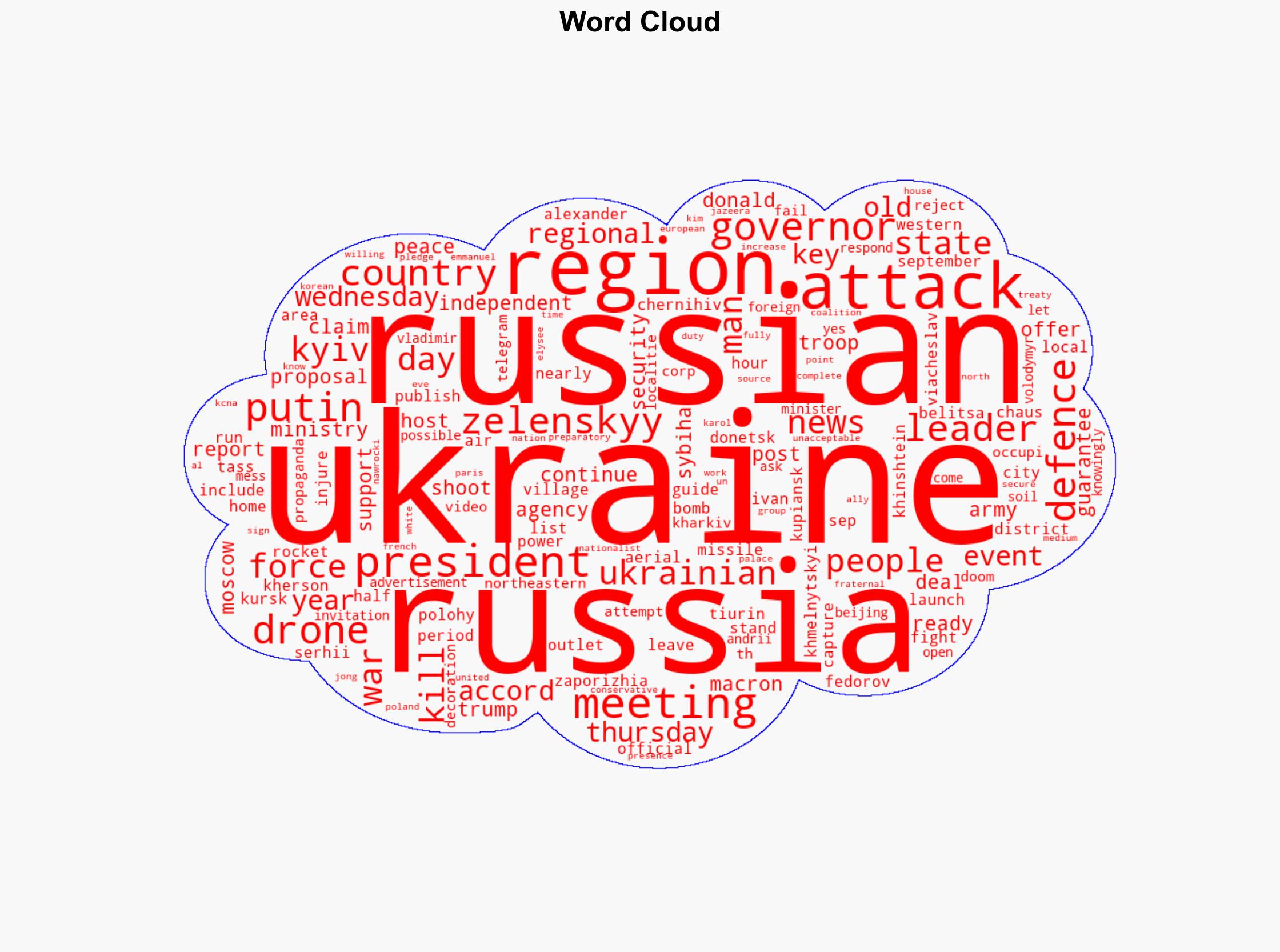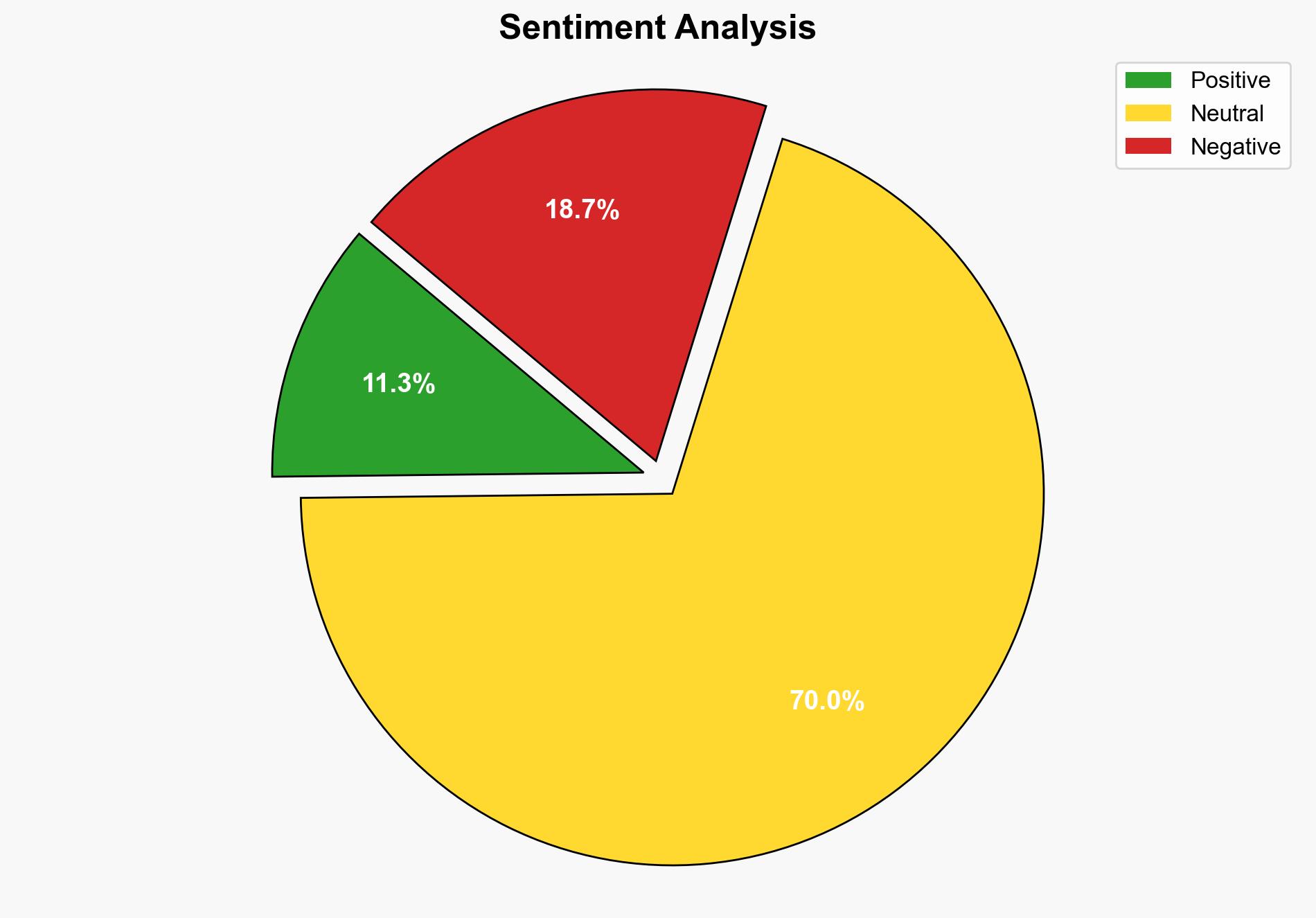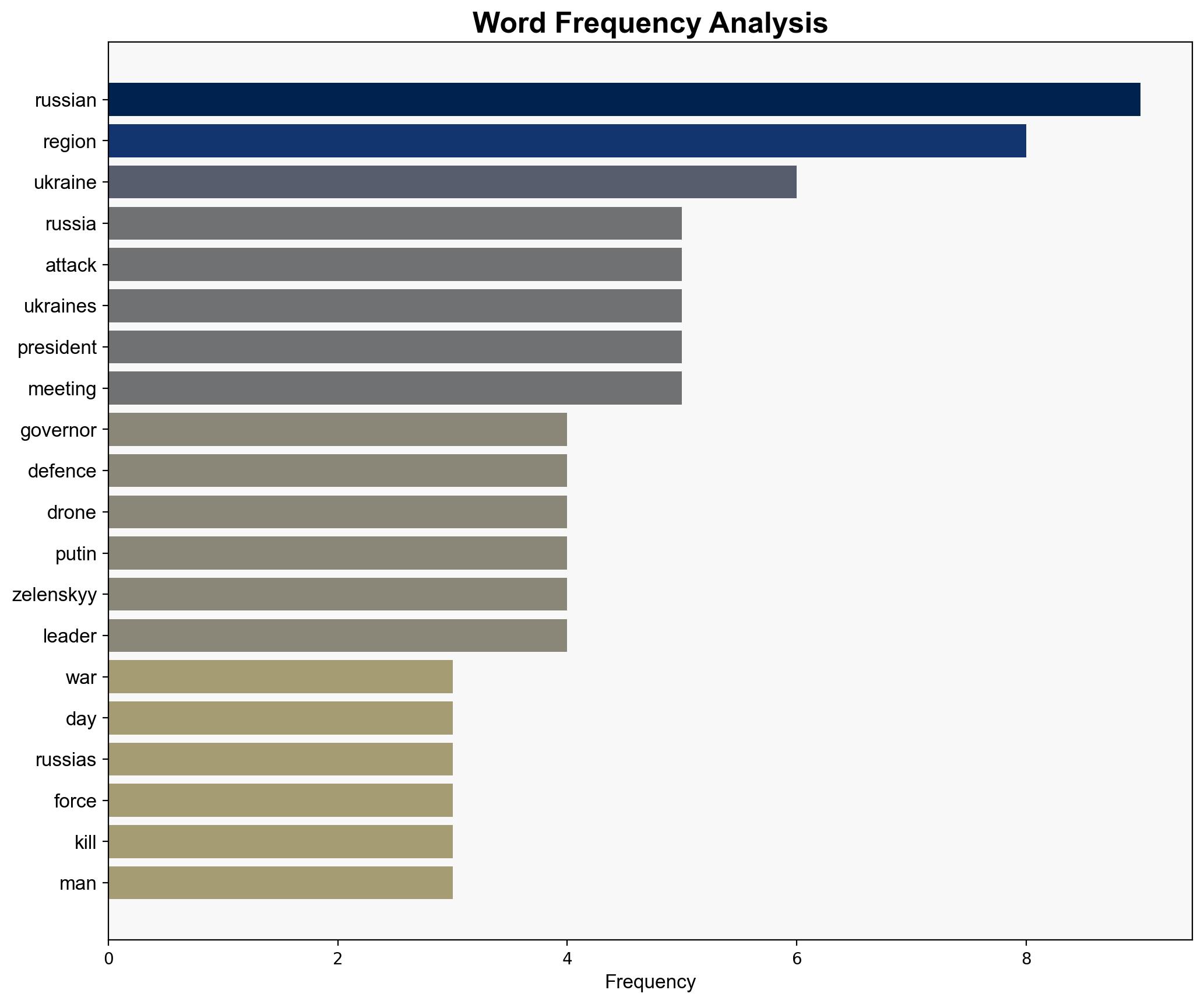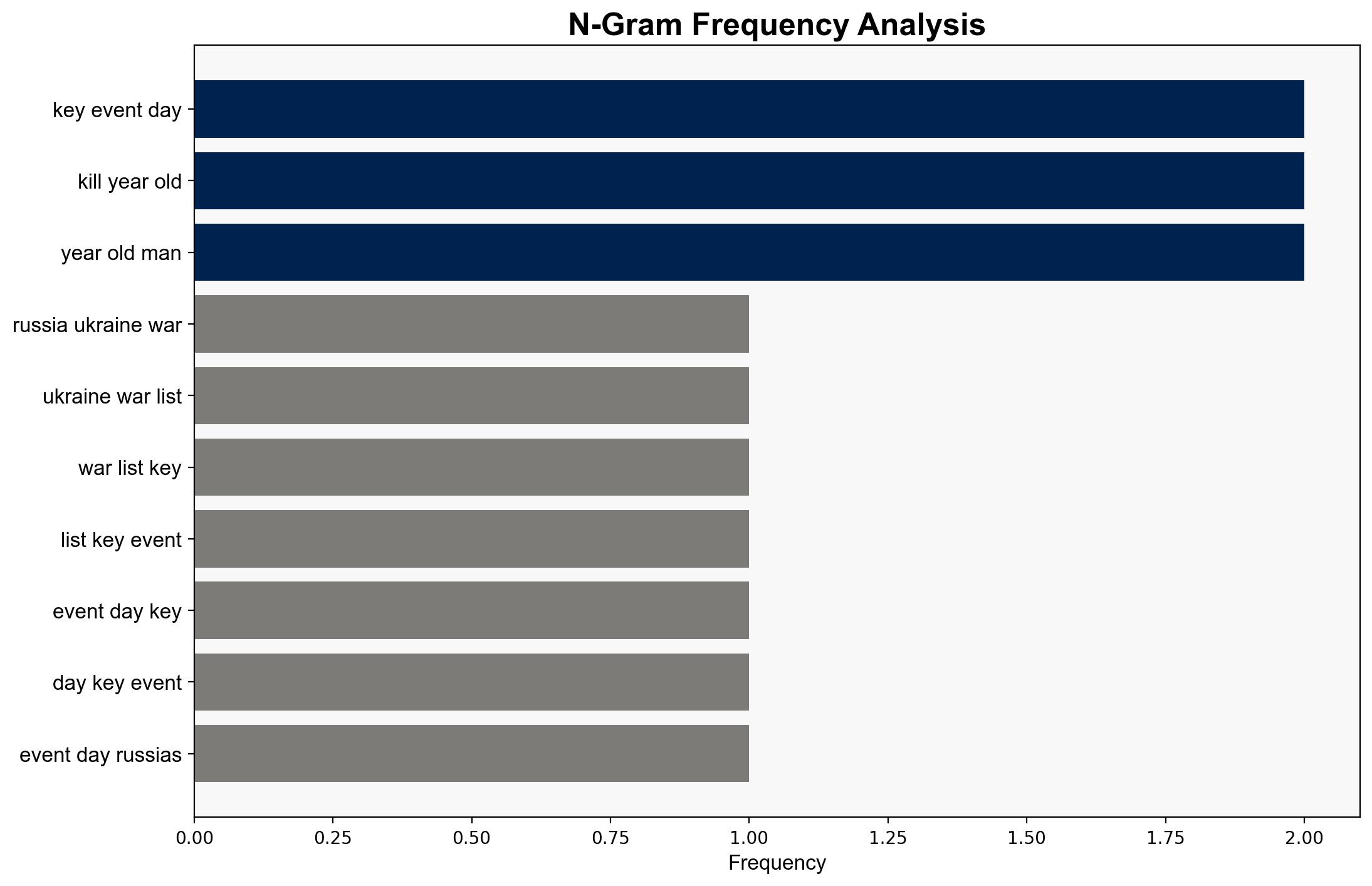Russia-Ukraine war List of key events day 1288 – Al Jazeera English
Published on: 2025-09-04
Intelligence Report: Russia-Ukraine war List of key events day 1288 – Al Jazeera English
1. BLUF (Bottom Line Up Front)
The current intelligence suggests a complex and evolving conflict between Russia and Ukraine, with significant implications for regional stability and international diplomacy. The most supported hypothesis is that Russia is intensifying its military operations to consolidate territorial gains and exert pressure on Ukraine and its allies. Confidence level: Moderate. Recommended action: Enhance diplomatic efforts to de-escalate tensions and consider bolstering defensive support to Ukraine.
2. Competing Hypotheses
1. **Hypothesis A**: Russia is escalating military actions to solidify control over contested regions and force Ukraine into unfavorable negotiations.
– **Supporting Evidence**: Increased attacks in Zaporizhia and Khmelnytskyi regions; claims of capturing parts of Kupiansk.
– **SAT**: Analysis of Competing Hypotheses (ACH) suggests this hypothesis is supported by the pattern of military aggression and strategic territorial claims.
2. **Hypothesis B**: Russia’s actions are primarily defensive, aimed at countering perceived threats from Ukraine and its Western allies.
– **Supporting Evidence**: Claims of shooting down Ukrainian drones; defensive posturing in response to Ukrainian attacks.
– **SAT**: Bayesian Scenario Modeling indicates this hypothesis is less supported due to the proactive nature of Russian military movements.
3. Key Assumptions and Red Flags
– **Assumptions**: Russia seeks to negotiate from a position of strength; Ukraine’s resistance is primarily defensive.
– **Red Flags**: Potential bias in reporting from state-run media; lack of independent verification of territorial claims.
– **Blind Spots**: Limited insight into internal Russian decision-making processes and potential covert support from other states.
4. Implications and Strategic Risks
– **Escalation Risks**: Continued military engagements could lead to broader regional conflict involving NATO.
– **Economic Impact**: Prolonged conflict may disrupt energy supplies and global markets.
– **Cyber Threats**: Increased likelihood of cyber-attacks targeting critical infrastructure in Ukraine and allied nations.
– **Geopolitical Dynamics**: Potential shifts in alliances, with countries like North Korea expressing support for Russia.
5. Recommendations and Outlook
- **Mitigation**: Strengthen diplomatic channels to facilitate dialogue and reduce hostilities.
- **Support**: Consider increasing defensive aid to Ukraine to deter further aggression.
- **Projections**:
– **Best Case**: Successful diplomatic intervention leads to a ceasefire and negotiations.
– **Worst Case**: Escalation into a wider regional conflict involving multiple state actors.
– **Most Likely**: Continued skirmishes with intermittent diplomatic efforts, maintaining a status quo of tension.
6. Key Individuals and Entities
– Vladimir Putin
– Volodymyr Zelenskyy
– Emmanuel Macron
– Donald Trump
– Kim Jong Un
7. Thematic Tags
national security threats, cybersecurity, counter-terrorism, regional focus





